Related Research Articles
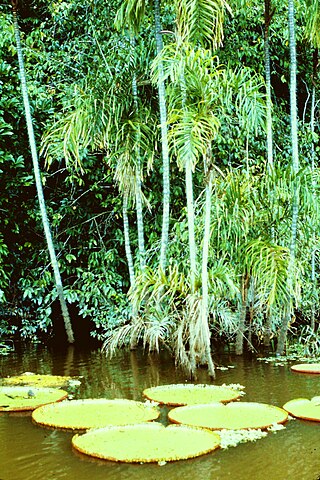
A biotope is an area of uniform environmental conditions providing a living place for a specific assemblage of plants and animals. Biotope is almost synonymous with the term "habitat", which is more commonly used in English-speaking countries. However, in some countries these two terms are distinguished: the subject of a habitat is a population, the subject of a biotope is a biocoenosis or "biological community".

The American chestnut is a large, fast-growing deciduous tree of the beech family native to eastern North America. As is true of all species in genus Castanea, the American chestnut produces burred fruit with edible nuts. The American chestnut was one of the most important forest trees throughout its range.

The pathogenic fungus Cryphonectria parasitica is a member of the Ascomycota. This necrotrophic fungus is native to East Asia and South East Asia and was introduced into Europe and North America in the early 1900s. The fungus spread rapidly and caused significant tree loss in both regions.
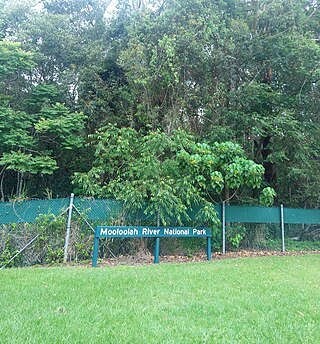
The Mooloolah River National Park is a nationally protected area located on the Sunshine Coast, Queensland. It covers an area of 830.9 hectares and is bordered by the Mooloolah River to the east, Claymore and Dixon Roads to the west, and the Lower Mooloolah River Environmental Reserve to the south. It is bisected by the Sunshine Motorway with the northern, 161.93 hectare component of the Park being a later addition. The Park was initially vacant crown land prior to national park designation in 1960. Surrounding land uses include livestock grazing, urban development and the campus of the University of the Sunshine Coast. It is the second largest mainland park on the coastal lowlands in South East Queensland after Noosa National Park and represents an example of low-lying coastal floodplain distinctive of the region.
This is an index of conservation topics. It is an alphabetical index of articles relating to conservation biology and conservation of the natural environment.

Fathom Five National Marine Park is a National Marine Conservation Area in the Georgian Bay part of Lake Huron, Ontario, Canada, that seeks to protect and display shipwrecks and lighthouses, and conserve freshwater ecosystems. Parks Canada has management plans for the aquatic and terrestrial ecosystems, with a multi-action plan for species that are at risk, including endemic species, the Monarch butterfly, the eastern ribbonsnake, and the eastern whip-poor-will. The aquatic ecosystems in the park are also of particular interest. Many fish, shellfish, amphibians, and eels are an attraction for naturalists in the park. Much of this wildlife is accessible to scuba divers and snorkellers in the park. The many shipwrecks make the park a popular scuba diving destination, and glass bottom boat tours leave Tobermory regularly, allowing tourists to see the shipwrecks without having to get wet. Additionally, there are three main popular hiking trails found within Fathom Five National Marine Park that provides visitors with views of old growth forests and the Georgian Bay. The Saugeen Ojibway Peoples have inhabited the Bruce Peninsula and the area that is now Fathom Five National Marine Park for thousands of years. This land provided for their communities and their people with the plethora of wildlife and plant life. They provide the local knowledge about Lake Huron and its ecological value to the reserve, park, and their overall livelihood. Parks Canada and Saugeen Ojibway People's collaboration is said to yield a benefit to both parties with regard to overall ecosystem knowledge.
The Canadian Wildlife Service or CWS, is a Branch of the Department of the Environment, a department of the Government of Canada. November 1, 2012 marked the 65th anniversary of the founding of Service.

The Golden Gate Biosphere Network is an internationally recognized voluntary coalition of federal, state, and local government agencies, nonprofit organizations, universities, and private partners within the Golden Gate Biosphere (GGB) region. The Network works towards protecting the biosphere region's biodiversity and conserving its natural resources to maintain the quality of life for people within the region. The Network has been part of the UNESCO Man and Biosphere Programme since 1988 and is part of the US Biosphere Network and EuroMAB. It is recognized by UNESCO due to the significant biodiversity of the region, as well as the Network's efforts to demonstrate and promote a balanced relationship between humans and the biosphere.
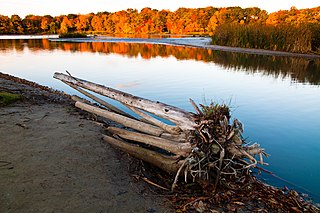
Rouge National Urban Park is a national urban park in Ontario, Canada. The park is centred around the Rouge River and its tributaries in the Greater Toronto Area. The southern portion of the park is situated around the mouth of river in Toronto, and extends northwards into Markham, Pickering, Uxbridge, and Whitchurch-Stouffville.
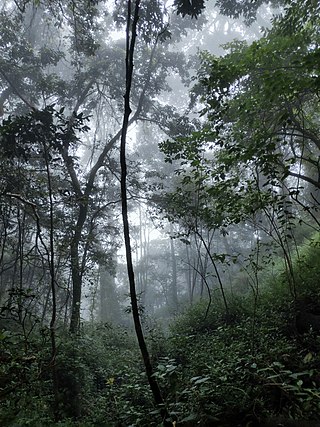
Sustainable forest management (SFM) is the management of forests according to the principles of sustainable development. Sustainable forest management has to keep the balance between three main pillars: ecological, economic and socio-cultural. Sustainable forestry can seem contradicting to some individuals as the act of logging trees is not sustainable. However, the goal of sustainable forestry is to allow for a balance to be found between ethical forestry and maintaining biodiversity through the means of maintaining natural patterns of disturbance and regeneration. The forestry industry mitigates climate change by boosting carbon storage in growing trees and soils and improving the sustainable supply of renewable raw materials via sustainable forest management. Successfully achieving sustainable forest management will provide integrated benefits to all, ranging from safeguarding local livelihoods to protecting biodiversity and ecosystems provided by forests, reducing rural poverty and mitigating some of the effects of climate change. Forest conservation is essential to stop climate change.

Moore State Park is a 737-acre (298 ha) public recreation area located in the town of Paxton, Massachusetts, USA, portions of which were listed on the National Register of Historic Places as the Moore State Park Historic District in 2004. Features of the state park include historical building foundations, a restored sawmill, Eames Pond, waterfalls and mill chutes as well as abundant azaleas, rhododendrons, and mountain laurel. The park is managed by the Massachusetts Department of Conservation and Recreation.
Ecologically sustainable development is the environmental component of sustainable development. It can be achieved partially through the use of the precautionary principle; if there are threats of serious or irreversible environmental damage, lack of full scientific certainty should not be used as a reason for postponing measures to prevent environmental degradation. Also important is the principle of intergenerational equity; the present generation should ensure that the health, diversity and productivity of the environment is maintained or enhanced for the benefit of future generations. In order for this movement to flourish, environmental factors should be more heavily weighed in the valuation of assets and services to provide more incentive for the conservation of biological diversity and ecological integrity.
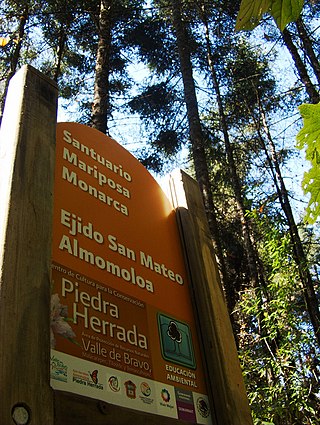
The Monarch Butterfly Biosphere Reserve is a World Heritage Site containing most of the over-wintering sites of the eastern population of the monarch butterfly. The reserve is located in the Trans-Mexican Volcanic Belt pine-oak forests ecoregion on the border of Michoacán and State of Mexico, 100 km, northwest of Mexico City. Millions of butterflies arrive in the reserve annually. Butterflies only inhabit a fraction of the 56,000 hectares of the reserve from October–March. The biosphere’s mission is to protect the butterfly species and its habitat.

The natural environment, commonly referred to simply as the environment, includes all living and non-living things occurring naturally on Earth.

Ecosystem management is an approach to natural resource management that aims to ensure the long-term sustainability and persistence of an ecosystems function and services while meeting socioeconomic, political, and cultural needs. Although indigenous communities have employed sustainable ecosystem management approaches for millennia, ecosystem management emerged formally as a concept in the 1990s from a growing appreciation of the complexity of ecosystems, as well as humans' reliance and influence on natural systems.

Conservation photography is the active use of the photographic process and its products, within the parameters of photojournalism, to advocate for conservation outcomes.
Noosa Biosphere Reserve is an internationally protected area covering the region of Noosa in Queensland, Australia. It is formally recognised as a Biosphere Reserve by the United Nations Education, Scientific and Cultural Organization (UNESCO) and Man and the Biosphere (MAB) program for its highly diverse ecosystem over a relatively small space. It was the first Biosphere Reserve for the state of Queensland, established in September 2007. The reserve is bound by the Noosa Shire Council boundaries, extending offshore by 3 kilometres (1.9 mi), covering 150,000 hectares in total. It is governed by Noosa Biosphere Limited (NBL), a not-for-profit company, which mainly consists of members from the local community who fulfil roles in the governance board, sector boards, and partnerships. Community plays a significant role in the implementation of the Biosphere Reserve guidelines.
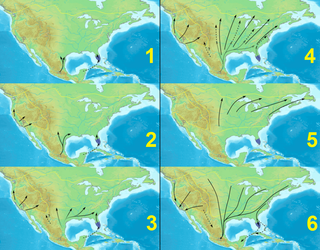
Monarch butterfly migration is the phenomenon, mainly across North America, where the subspecies Danaus plexippus plexippus migrates each summer and autumn to and from overwintering sites on the West Coast of California or mountainous sites in Central Mexico. Other subspecies perform minor migrations or none at all. This massive movement of butterflies has been called "one of the most spectacular natural phenomena in the world".
The U.S. state of California has instituted numerous conservation programs, policies, laws, reserves and Habitat restoration projects throughout the state to facilitate the health and migration of the western population of the monarch butterfly. The population of western monarchs require very different breeding and overwintering habitat when compared to the eastern population of monarch butterflies. They require specific micro-climatic conditions to survive the winter and they are sensitive to habitat changes at the overwintering sites. The large aggregations of butterflies are seen as the most vulnerable at their overwintering locations along the coast. Many monarch overwintering sites are contained within the "coastal zone"; an area defined by the Coastal Zone Management Act to be 1000 yards inland from the high tide mark. Large number of overwintering sites are outside the coastal zone. There are more than 450 overwintering sites in California.

The forests of Mexico cover a surface area of about 64 million hectares, or 34.5% of the country. These forests are categorized by the type of tree and biome: tropical forests, temperate forests, cloud forests, riparian forests, deciduous, evergreen, dry, moist, etc.. The agency in charge of Mexico's forests is the Comisión Nacional Forestal. Despite major reforms to the Mexican Constitution in 1992 regarding private land, Mexico would later enact major forest regulation laws in 1998 and 2003. Though no longer required to enforce land regulation in Mexico, Article 27 of the Mexican Constitution also still permits the Mexican Government to enact land regulation.
References
- ↑ "Developing conservation management strategies: Consulting". Department of Conservation. Retrieved 30 May 2012.
- ↑ Brown, K. (2002). Innovations for Conservation and Development. The Geographical Journal,168(1), 6-17. Retrieved from https://www.jstor.org/stable/3451218
- ↑ Parks Canada (2014). "Rouge National Urban Park Management Plan". www.pc.gc.ca. Retrieved 2019-07-18.
- 1 2 3 Gonzalez-Duarte, C. "Butterflies, organized crime, and sad trees": A critique of the Monarch Butterfly Biosphere Reserve Program in a context of rural violence". World Development.
- ↑ Barnes, J.C. and Delborne, J.A. (2021). "The politics of genetic technoscience for conservation: The case of blight-resistant American chestnut. Environment and Planning E". Nature and Space.
{{cite news}}: CS1 maint: multiple names: authors list (link)
